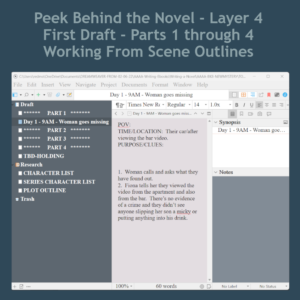FIRST THINGS FIRST:
 First there’s the mystery outline of a novel. It’s important to know where the mystery begins, the names of all suspects, everyone’s motivation for murder or kidnapping, theft, etc. But once you have your crime and mystery outline, what then?
First there’s the mystery outline of a novel. It’s important to know where the mystery begins, the names of all suspects, everyone’s motivation for murder or kidnapping, theft, etc. But once you have your crime and mystery outline, what then?
Then it’s time to turn to the subplots. Below are the five best tips to come up with subplots that fit the story.
Make sure your subplots support the main plot.
 The subplots should not detract from the main plot, but should instead enhance it. They should add depth and complexity to the story, and they should help to drive the main plot forward. In a mystery, it’s easy to mirror a main character’s personality trait in a witness and create some inner dialogue. This ties it in nicely.
The subplots should not detract from the main plot, but should instead enhance it. They should add depth and complexity to the story, and they should help to drive the main plot forward. In a mystery, it’s easy to mirror a main character’s personality trait in a witness and create some inner dialogue. This ties it in nicely.

Give your subplots a narrative arc.
Each main character should have their own arc, even if it’s a short arc for this one book in a series. There should be an arc of growth for the main characters. But just like the main plot, your subplots should have a beginning, middle, and end. They should have a clear goal or objective, and they should build to a satisfying resolution.
Write character-driven subplots.
The best subplots are those that are driven by the characters and the drama from their personal lives. The characters should have their own goals and motivations, and they should be actively working to achieve those goals throughout all four segments of the story. Even in a series, there should be a distinct growth on some level from the beginning of the novel to the end.
Try a new POV.
 If you’re writing a first-person novel, try using a different POV for your subplots. This can help to add variety to your story and to give readers a different perspective on the events. This is not a technique that I would suggest to beginner novelists, but for authors who are more seasoned, yes, this is a way to shake things up a bit.
If you’re writing a first-person novel, try using a different POV for your subplots. This can help to add variety to your story and to give readers a different perspective on the events. This is not a technique that I would suggest to beginner novelists, but for authors who are more seasoned, yes, this is a way to shake things up a bit.
Figure out how to connect the subplot and the main plot.
The subplots should be connected to the main plot in some way. This could be through a character, or a job, a family connection or a neighborhood. The connection should be clear to the reader, and it should help to make the story more cohesive, more realistic.
Ramp up the tension with a subplot.
 Subplots can be used to ramp up the tension in your story. It’s a great way to add a little more pressure onto your main character or characters! Not only do they have to catch the bad guy, but their landlord is threatening them, or their wife is threatening to leave them, etc. If the main mystery plot is getting a little slow as you drip in clues, you can spice up the subplot that will add some excitement and suspense.
Subplots can be used to ramp up the tension in your story. It’s a great way to add a little more pressure onto your main character or characters! Not only do they have to catch the bad guy, but their landlord is threatening them, or their wife is threatening to leave them, etc. If the main mystery plot is getting a little slow as you drip in clues, you can spice up the subplot that will add some excitement and suspense.
Use subplots to explore themes.
Subplots can be used to explore themes in your story. For example, if your main character has a goal of having her own family, you could have a subplot about how the character is struggling to find their place in their family or with their in-laws.
Keep your subplots short and sweet.
 Subplots need to be interesting, yes, but it’s easy to go overboard with them too. So the arc needs to be short but concise. They should be short and sweet, so to speak. They should be short enough to keep the reader’s interest, but not so short that they feel underdeveloped.
Subplots need to be interesting, yes, but it’s easy to go overboard with them too. So the arc needs to be short but concise. They should be short and sweet, so to speak. They should be short enough to keep the reader’s interest, but not so short that they feel underdeveloped.
Don’t be afraid to kill off characters in subplots.
And the last tip, and this is mostly to beginners, don’t be afraid to kill off characters in subplots. This can add a sense of realism to your story, and it can also help to raise the stakes for the main characters. It can also be a shocking event that heightens the tension or adds a twist in the plot.
CHECK OUT MY PEEK BEHIND THE NOVEL VIDEO SERIES






